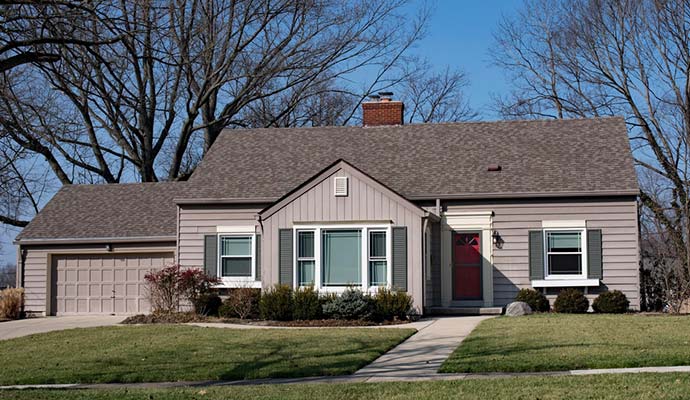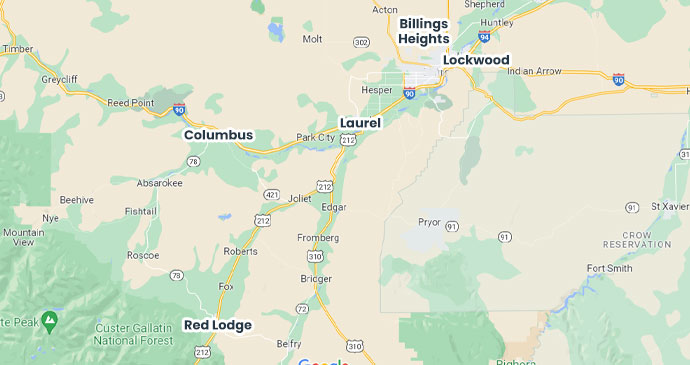"Luckily I have never needed to use a restoration company, but as someone who has worked closely with Alpha Omega, they have treated my clients very well, and have always been honest and very transparent. Although their whole team is very professional and punctual, Carissa and Sonya have been great to work with."
Spring Home Maintenance Checklist

After a long and brutal winter in Montana, your home and yard can be a mess. Heavy ice and snow on your roof, fallen tree branches and melting snow in your backyard, and constant freezing and thawing temperatures can have a huge effect on your property. Getting ahead of these potential issues before spring is in full bloom can help prevent flooding, mold growth, and home damage.
Use this spring home maintenance checklist to inspect your home and lawn to make sure it’s in good repair for the upcoming rainy spring. By finishing this home maintenance checklist now, you will be able to prevent costly damage later.
1. Conduct a Roof Inspection
During winter, snow can build up on your roof, melt in warmer days, then refreeze during the colder nights. If this happens enough, ice dams can form that will cause much greater damage, like chipped, warped, or cracked shingles. The ice can also form tiny holes, allowing melting snow, melting ice, and rain into your attic. If uncaught, this water can lead to large and expensive water damage to the structure of your roof, attic, and even cause mold growth in your insulation. Also check for a broken or missing chimney cap, which, if not fixed, can not only lead to weather damage, but may lead to critters getting into your home during prime spring nesting time.
2. Clean Your Gutters
Make sure your gutters are of debris in your gutter and downspouts. Clogged gutters won’t let rainwater properly drain down and away from your home. If rain falls over the side of the gutters, it can pour right into your home through the foundation. When you inspect your gutters, check for cracks, chips, or damaged areas. Look at where your gutters connect to the side of your home and make sure they aren’t hanging away or detached in any areas. Secure the gutters to your house, if necessary.
3. Conduct House Siding Repairs
No matter what your home is made of–stucco, vinyl, or wood, there’s a chance winter weather may have caused some damage. It’s important to fix these damages, not because of aesthetics (although, that does increase your home value), but mainly because cracks and tears in your siding can allow moisture to leak into your home, causing rot and structural damage to your walls. Be aware of any siding that is warped, buckled, or holey. Replace any missing or damaged pieces of trim or siding. Look further into any pieces of siding with discolorations or stains. This may be a sign of something brewing underneath.
4. Look for Foundation Damage Signs
Making sure your foundation is in tip top shape is very important, as your house is only as good as the foundation it is resting on. If you notice any cracks, gaps, holes, or crumbling areas, hire a professional to fix those right away. These issues let moisture enter your home and further eat away at the foundation. If you see water puddling outside a part of the foundation, that can also be a sign that water is seeping into your home or basement through the ground and foundation. Lastly, look at your walls, and around doors and windows. If you notice any new cracks, that can be a possible sign of a foundation issue.
5. Update Landscaping
Taking a walk around your property and inspecting your landscape is especially important right after winter and before spring. Melting snow can reveal major problem areas in your yard that can lead to larger issues down the line. If you notice that many branches from trees or shrubs fell close to your house, it might mean they are too close to your home and need to be trimmed back or removed. If the melting snow and ice melt toward your home and foundation, it may be time to regrade your yard. Take note of bulging, lifting, or cracked cement walkways. This also might mean poor underground drainage or bulging tree roots.
Has Spring Rainfall Caused Flooding in Your Home?
Call Alpha Omega Disaster Restoration for a inspection and assessment of your water damage. Alpha Omega is a fully certified restoration company serving Billings, MT and the surrounding areas. When repairing your home after a flood, you want to have the restoration company do all the work so that it is done correctly without the possibility of further problems creeping up in the future. Alpha Omega Disaster Restoration is a full general contractor with those appropriate certifications.
Our crew is on call 24/7 and we will come to assess the situation, document the damage, and then we will work with your insurance adjuster to provide you the fastest and best water restoration possible. With our help you can focus on your family and relationships, while you let us worry about restoring your physical property to its pre-disaster state. When we are done, all traces of the destruction will be gone, and you will be left with a safe and comfortable home.













